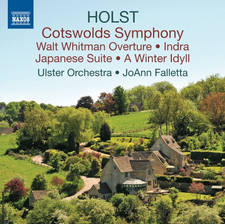Ballet Music: Where To Start
Ballet is defined by dance, naturally, but it's also the gateway to some of the greatest music in the classical canon.
Sometimes it's merely used to colour what's going on on stage, sometimes it's as a storming concert work in its own right. So, what's the deal with ballet music? Well, it depends on the ballet. When ballet was coming into its own as a dance medium, throughout the 17th and 18th centuries, the music was very much a background element. It took a long time for the music to be considered anything close to equal to the dance on stage, but it didn't stop some of history's favourite composers ploughing their best material into the medium.
Where to Start
Tchaikovsky's Swan Lake was a game-changer for ballet music. It was the first time an exclusively symphonic composer had composed a score for ballet, and that wasn't until 1876. Tchaikovsky's fingerprints are all over the work and, notably, Swan Lake is perfectly digestible if you listen with or without dance. It's packed with tunes, from the gentle Dance of the Little Swans to the clattering finale (which you might recognise from old Frankenstein and Dracula movies from the '30s, as well as Billy Elliot). Listen to our ballet music playlist below to get an idea.
But that's just an entry point. Before that, composers had to be specialists when it came to ballet, and were often seen as far less important or artful than their more symphonic peers. The focus was strictly on dance, and the composer's job was simply to accompany. Early examples to look at would be Jean-Phillipe Rameau's Les Indes Galantes from 1735 (which is actually more of an opera-ballet - listen to an extract below), and perhaps Jean Baptiste Lully's Psyché ou la puissance de l'amour from 1656. They show the art form in its infancy, when composers were still working out how best to write music for dance.
Changement...
Early ballet music is one thing but, as we've seen, it all started to get interesting when Tchaikovsky got involved. Being Russian and in one of ballet's most renowned countries, Tchaikovsky and his fellow composers had ample opportunity to compose ballet music. So, Prokofiev's Romeo and Juliet (which premiered in 1938) is another ballet that's as famous for its music as it is for its challenging dance moves. Check out the Dance of the Knights (more commonly known as Montagues and Capulets, or the tune from The Apprentice), which appears in a popular orchestral suite of dances from the ballet.
While you've got Prokofiev on the brain, give Cinderella from 1944 a go as well. There are oodles of gorgeous tunes waiting to be found in this grand pantomime of a ballet, from the sweet and atmospheric introduction to the hilarious dances of the ugly sisters. Other unmissable ballet music includes Armenian composer Aram Khachaturian's Adagio of Spartacus and Phrygia from Spartacus (otherwise known as the music from The Onedin Line), and the Sabre Dance from Gayane - both of which are stone-cold classics of 20th Century, with or without the dancing.
If you're feeling brave, you might want to give Stravinsky a whirl. He was credited with composing some of the most challenging ballet music of the 20th Century, and if you stick with it it can be extremely rewarding. Try the concluding Danse Sacrale from The Rite Of Spring and imagine how hard it would be to dance along in anything approaching an acceptable way. Yikes.
Russians aside, it's also worth checking out Mendelssohn's score for A Midsummer Night's Dream. Keeping the European end up in terms of ballet music, this cracker features that most beloved of ceremonial pieces, the Wedding March. However, it's not strictly ballet music as we know it - it was originally composed by Mendelssohn to accompany a normal stage play version of the Shakespeare original. It wasn't until 1962 that it was given the full ballet treatment.
Does it work outside the theatre?
Ballet is, by its very definition, a visual art form as much as a musical one. Performances of Tchaikovsky's work in particular, from the festive fun of The Nutcracker to the lush drama of Swan Lake, are extremely visual and are still exceptionally popular with audiences. But the fashion for turning ballet music into straight orchestral works (usually called 'Ballet Suites' or something similar) has meant that much of this music is just as enjoyable without all the tights and prancing.
So, if you've got a chance to see some ballet live, do so. But that doesn't mean you should ignore recordings of the music alone. Often, when it's taken out of context, ballet music is every bit as rich and involving as a fully staged production. It's time to don your ballet pumps and prepare your plié...






















